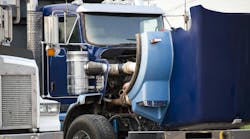It was not long ago that fleets were doubtful of ever receiving the newer trucks they needed as OEMs continued to pare back allocations or extend delivery times. Most of the shortages have abated; newer trucks are more readily available. However, these trucks are much pricier at a time when interest rates continue to rise. That’s why many fleets are holding onto their existing assets for a longer period of time.
Faced with this reality, fleets must be smarter, more efficient, and more proactive with their maintenance practices and performance. As a result, there is a greater reliance on the maintenance team, their procedures, and protocols than ever before. Below are just some of the steps fleets need to take to ensure that their older assets can maintain productivity for a longer timeframe ... or until interest rates come down.
Scheduled maintenance
Fleets should have regular preventive maintenance schedules in place to ensure all assets are running efficiently and to prevent or reduce downtime. How often that occurs should be assessed on a truck-by-truck basis.
Deciding when an individual truck needs scheduled maintenance depends on several factors: the age of the truck, the mileage it travels regularly, environmental issues (trucks operating in colder climates will need different maintenance to address the wear and tear caused by snow and ice conditions), usage patterns, and more.
Although no truck should miss its assigned schedule, it is sometimes unavoidable. Maintenance managers need to have a system that will track the compliance of each asset. Should a truck miss its scheduled appointment, a new time will be set up.
Predictive maintenance
The best way to avoid downtime is to solve a problem before it actually becomes a problem. Unlike preventive maintenance, which follows a specific planned schedule, predictive maintenance uses real-time data to ensure maintenance occurs as needed, enabling problems to be identified and corrected before they interrupt operations.
Predictive maintenance should look at received diagnostic trouble codes per truck and measure that against historical data of that asset to fix a problem earlier. However, that requires a software platform and personnel that can interpret the data analytics provided. This can be a challenge for smaller fleets, but the benefits of reduced downtime and less expensive repairs would be worth the cost. Fleet managers need to be able to determine which issues require immediate action and which can wait to be addressed or even deferred until the next scheduled maintenance service.
See also: Bullish on mobile fleet maintenance
Track and measure maintenance KPIs
Maintenance managers need to monitor the fleet by setting up key performance indicators to measure performance. Four of the KPIs to consider:
- How many miles does a component function before it needs to be replaced? This is especially true for items like tires and brakes that get lots of wear.
- If a vehicle is in the shop between PM services, managers need to explore why. Missed appointment? New route deployment? Technician missed something?
- Track the number of on-road breakdowns. If too many occur, see if there’s a pattern that points to a vehicle or personnel issue.
- Look to your drivers. They know the vehicle as well as anyone. Look at the driver’s daily vehicle inspection report.
Commit to ongoing personnel training
Fleets continue to experience shortages of qualified drivers and technicians. If you’re fortunate enough to have a good team, you want to retain them. One of the ways to do that is to offer ongoing training to keep up with new diagnostic equipment and tools.
Trucks are much more complex and technology-enabled than ever, so your diesel techs need to keep pace with those advances. Do the same for your drivers, who are the first line of defense when something doesn’t seem right. It’s important to include drivers in their own training courses.
Dedicated contract maintenance can relieve the burden
If transportation is not your core business, and if your fleet serves only as a way to get your product to its destination, then you might consider outsourcing your fleet maintenance. Doing so lets you maintain control of your fleet without the expense of keeping an on-site shop, excess inventory, and increased headcount due to seasonal variability.
Knowing what your annualized maintenance costs will be will give your organization greater control over its working capital so that it can grow the business and move forward.



